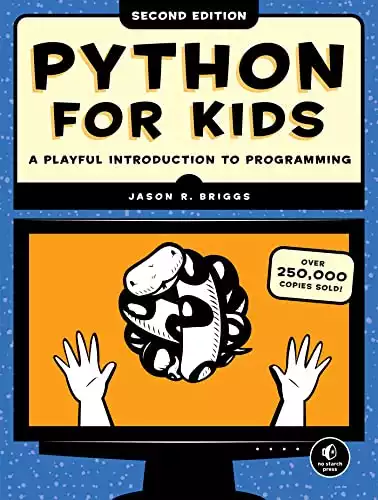Introduction
Machine learning for kids: Welcome to your first coding tutorial in Python! Python is an excellent language for beginners due to its readability and compact syntax. Let’s start by writing a classic starter program: “Hello, World!”.
The language of choice for many data scientists, machine learning, web developers, and software engineers around the world. Let us get into it!
Table of Contents
Who Is This For?
Grade: 6th to 10th
Your first program in python tutorial is specifically designed with students in grades 6 through 10 in mind. We understand that you may be just starting your journey into the world of coding, and the idea of writing your first program might seem daunting. Don’t worry! We’ve broken down the process into easy-to-follow steps, with clear instructions and explanations. You don’t need any previous coding experience to write your first python program. This guide will serve as a great starting point for your exciting exploration into Python programming and the wider field of computer science and machine learning. Get ready to step into a new world of creativity, problem-solving, and digital innovation!
Also Read: The Role of Artificial Intelligence in Education
What Will We Learn?
In this journey of “Machine Learning for Kids” lets learn the basics of python which is the foundation of machine learning. Machine learning, a subset of artificial intelligence, is all about teaching computers to learn from data, just like humans do from experience. We will start by understanding what machine learning is and explore its various types. We’ll then have fun creating, training, and testing our very own machine learning models using Python! By demystifying complex concepts and using engaging, real-world examples suitable for grades 6 through 10, we’ll transform seemingly intricate algorithms into understandable, hands-on projects. So gear up to embark on this exciting expedition where we’ll turn computers into our learning companions!
Your First Program In Python
Step 1: Opening a Text Editor
First, we need to write our Python program in a text editor. This could be Notepad (Windows), TextEdit (Mac), or a more advanced editor like Sublime Text, Visual Studio Code, or Atom.
Open your text editor of choice.
Start a new file.
Step 2: Writing Your Program
In the new file, type the following:
print("Hello, World!")Here’s what this code does:
print is a built-in Python function that displays text in the console.
("Hello, World!") is the text we want to display. It’s a string, which means it’s a sequence of characters enclosed in quotation marks.
Step 3: Saving Your Program
Save the file with a .py extension, which stands for Python. You can name the file anything you want, but for this example, let’s call it hello_world.py.
Be sure to remember the location where you saved this file.
Step 4: Running Your Program
Now, it’s time to run your program and see the output! The process is slightly different for Windows and Mac:
On Windows:
Open the Command Prompt (you can do this by typing “Command Prompt” into the search bar and pressing Enter).
Use the cd command to navigate to the folder where you saved your hello_world.py file. For example, if you saved it in a folder named PythonPrograms on your C: drive, you would type cd C:\PythonPrograms and press Enter.
Once you’re in the correct folder, type python hello_world.py and press Enter.
On Mac
Open Terminal (click on the magnifying glass in the top right corner for Spotlight Search, type Terminal, and press Enter).
Use the cd command to navigate to the folder where you saved your hello_world.py file. For example, if you saved it in a folder named PythonPrograms in your Documents, you would type cd Documents/PythonPrograms and press Enter.
Once you’re in the correct folder, type python3 hello_world.py and press Enter.
Regardless of whether you’re on Windows or Mac, you should now see Hello, World! printed in your terminal or command prompt. Congratulations! You’ve just written and run your first Python program.
In the upcoming tutorials, we will explore more Python basics like variables, data types, conditionals, loops, and functions, all important building blocks of a Python program. Happy Coding!
NEXT TUTORIALS
Tutorial 1 – Installing Python
Tutorial 2 – Your First Program in Python
Tutorial 3 – Python Variables
Tutorial 4 – Python Data Types
Tutorial 5 – Conditionals
Tutorial 6 – Loops
Tutorial 7 – Functions
Tutorial 8 –
Tutorial 9 –
Tutorial 10 – Your First Machine Learning Program!
Explore more with this book.
References
Briggs, Jason R. Python for Kids: A Playful Introduction To Programming. No Starch Press, 2012.












